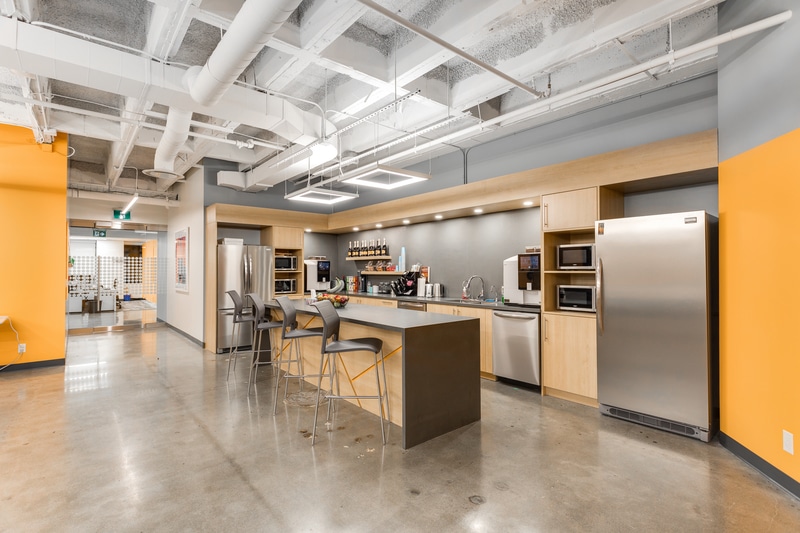A well-designed office kitchen is more than just a place for employees to grab snacks; it plays a crucial role in promoting productivity and workplace satisfaction. This article explores the various aspects of kitchen design and its impact on employee well-being and team dynamics.
Enhancing Employee Collaboration
A well-configured kitchen fosters interaction among employees.
When the kitchen is designed as a communal space, it encourages employees to engage with one another during breaks. This interaction can lead to improved relationships and collaboration, as employees from different departments can share ideas and insights. An inviting layout, complete with comfortable seating and open areas, can significantly promote a sense of community. Furthermore, informal discussions that occur in the kitchen space can often lead to innovative solutions and teamwork. Ultimately, collaboration in shared spaces enhances organizational culture.
Promoting Employee Health
Proper kitchen design directly influences employee health and wellness.
An effectively designed office kitchen can facilitate healthier eating habits by providing access to nutritious food options and encouraging meal preparation. By incorporating appliances such as microwaves, toasters, and refrigerators, employees have the opportunity to bring and prepare healthy meals. This accessibility can reduce the reliance on takeout and fast food options, promoting better overall health. A space that emphasizes cleanliness and proper storage can also encourage hygienic practices and reduce illness in the workplace. Ultimately, a focus on health can lead to lower absenteeism and higher productivity.
Increasing Workplace Productivity
An efficient kitchen layout contributes to a more productive work environment.
Office kitchens designed with productivity in mind can significantly reduce downtime during breaks. Streamlining the kitchen experience, such as having easy access to coffee and snacks, allows employees to recharge quickly and return to work revitalized. Furthermore, a well-organized kitchen can help minimize clutter and confusion, allowing for smoother operations. Incorporating user-friendly designs can enhance workflow, making it easier for employees to prepare refreshments without unnecessary delays. Ultimately, the design of the kitchen space contributes to a more efficient use of time.
Encouraging Creativity
A thoughtfully designed office kitchen can be a catalyst for creativity.
When employees feel relaxed and comfortable in a kitchen space, they are more likely to engage in creative thinking. The kitchen can serve as a casual environment for brainstorming and collaboration, where ideas flow more freely. Providing amenities like whiteboards or brainstorming corners in the kitchen can further enhance creative discussions. Additionally, offering a variety of seating options can accommodate different work styles, helping foster an atmosphere conducive to innovation. Thus, a well-considered kitchen design impacts both individual and team creativity.
Fostering Employee Engagement
A vibrant kitchen space can boost employee morale and engagement.
Creating an inviting and aesthetically pleasing kitchen environment can significantly enhance employee satisfaction. Elements such as bright colours, modern appliances, and comfortable furniture contribute to a positive atmosphere. This can translate into improved employee engagement, as individuals feel valued and appreciated in a welcoming space. Regular team activities or health initiatives held in the kitchen can also promote a sense of belonging and community. Engaged employees are more likely to contribute positively to the organization’s overall success.
Facilitating Sustainability
Sustainable kitchen designs promote environmental responsibility.
Incorporating eco-friendly practices into office kitchen design can foster a culture of sustainability within the workplace. This includes using energy-efficient appliances, implementing recycling stations, and encouraging the use of reusable dishware. Educating employees about sustainable practices helps raise awareness and promotes responsible consumption. By prioritizing sustainability, the workplace not only reduces its environmental footprint but also attracts employees who value corporate responsibility. An emphasis on sustainability can enhance company reputation and employee pride.
Saving Costs in the Long Run
Investing in quality kitchen design can lead to significant cost savings.
Although the initial investment in a well-designed office kitchen may seem high, the long-term financial benefits can be substantial. By minimizing waste through efficient storage solutions and encouraging healthier eating habits, companies can reduce healthcare costs associated with employee illness. Additionally, improved morale and productivity can lead to lower turnover rates, saving on recruitment and training expenses. An office kitchen that meets employee needs reduces the likelihood of out-of-office lunches, saving both time and money. Ultimately, a strategic investment in kitchen design pays off.
In summary, a thoughtfully designed office kitchen is a vital investment for any organization aiming to enhance employee satisfaction, health, and productivity. By fostering collaboration, promoting wellness, and encouraging creativity, a proper kitchen design positively influences the workplace environment and overall business success.

